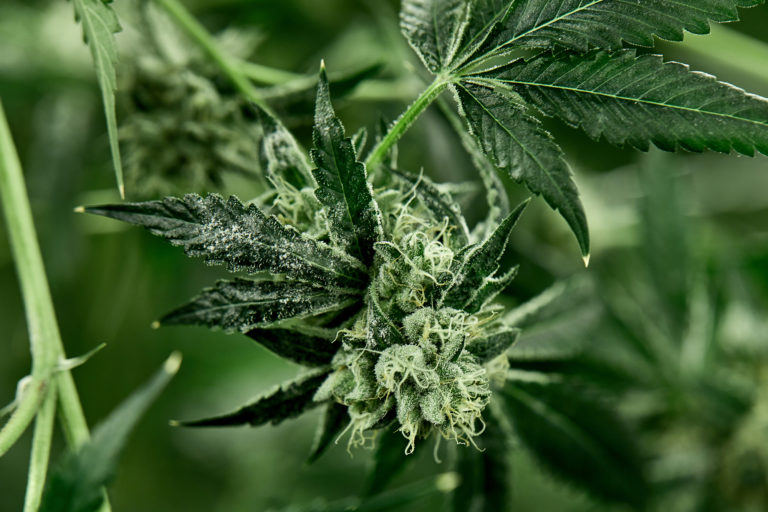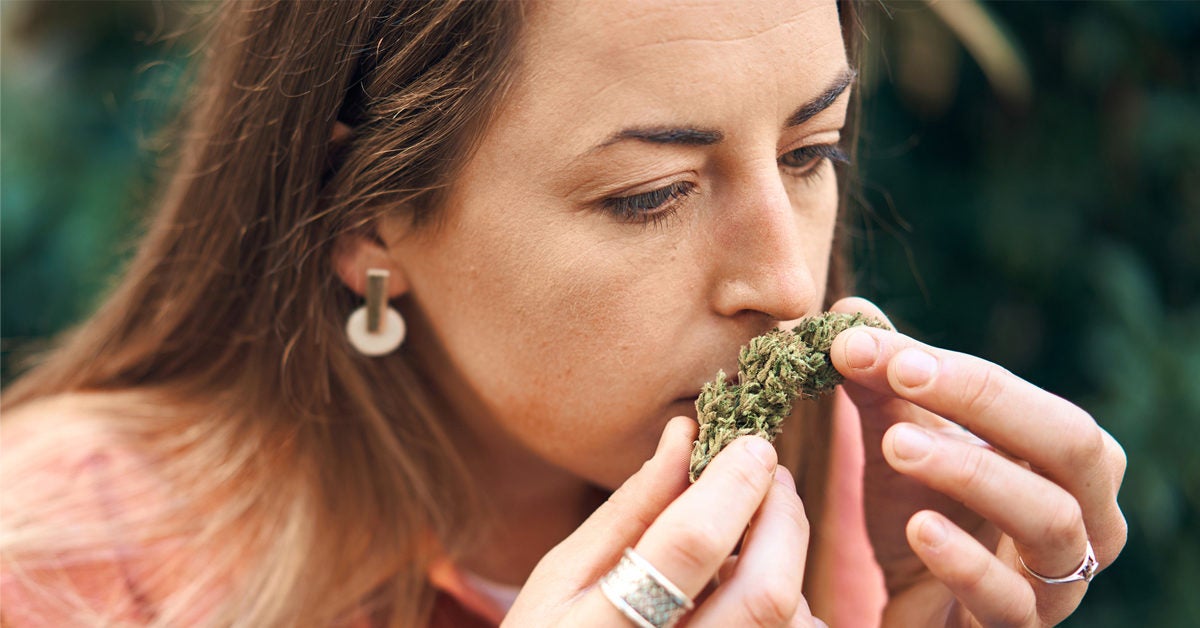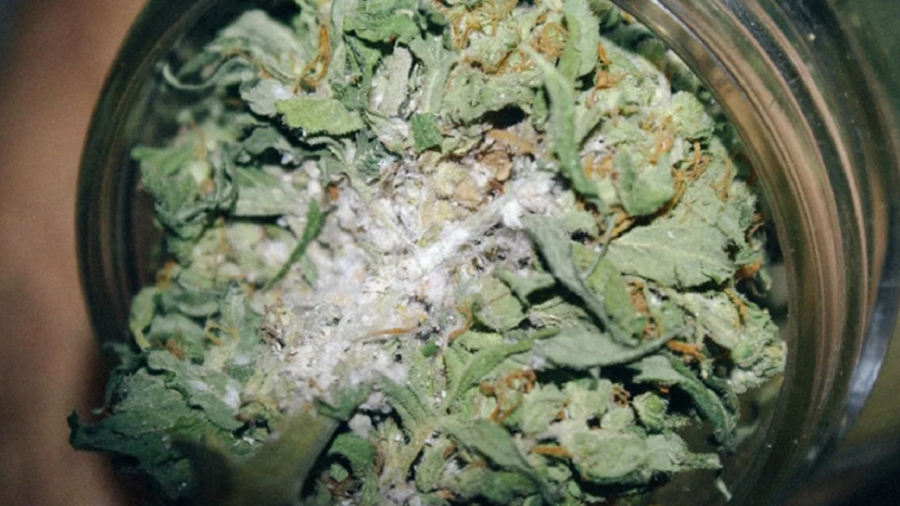Mold is never a welcome sight. Not in bread or cheese, and certainly not in your cannabis. Moldy weed is not only disgusting, it’s dangerous. Consuming mold-infested weed can have some serious adverse effects. But how do you know if your bud’s been infected?
Nearly every legal state has some sort of microbial lab testing requirement for regulated cannabis sales. These tests check for mold and mildew in batches of marijuana. However, even legal markets have seen their share of moldy cannabis over the years.
What is mold?
Mold is a catchall term for fungus that reproduces via lightweight, airborne spores. Humans inhale or ingest minuscule amounts of mold every day. It is typically harmless in small quantities since a healthy immune system can successfully prevent any damage.
Mold found on marijuana buds, or flower, is the same kind that grows on other plants. Botrytis (responsible for bud rot), Mucor, Cladosporium, Rhizopus, and Penicillium (the mold responsible for penicillin) are the most common. Mold thrives in humid or moist environments that lack proper air ventilation.

In cannabis mold most often develops when the bud isn’t dried correctly, though it can form in earlier stages of cultivation, such as in a too-humid grow room. Improperly dried weed stored in an airtight container for curing creates an ideal breeding ground for mold.
Mold spores are tricky to eliminate. They can survive the intense heat of a lighter when smoking a hit and they don’t burn off in the oven when weed is decarbed. Some molds produce mycotoxins too, which can be carcinogenic.
What happens if you smoke moldy weed?
When you smoke moldy weed, you inhale the fungus directly into your lungs. Those with compromised immune systems are at risk of developing a lung infection. Smoking moldy weed is also dangerous for those with allergies to mold-based antibiotics such as penicillin.
How to check for moldy weed
Thankfully, there are several ways to determine if your flower is mold-free.
Use the naked eye method
Eyeballing your weed is by far the easiest way to check for mold.
Healthy cannabis should be covered in spindly, glittering trichomes. Trichomes are sparkly glands with tiny hairs that appear almost crystalline in structure, separated by distinct trichome nodules with space in between them.
These are significant signs to keep in mind as you visually examine your bud.
Some mold looks like cobwebs in the bud, leaving behind a cotton candy-like webbing that’s gray or white in appearance. This could also be caused by spider mites, but you don’t want to smoke bug-infested weed either.
Another type of mold looks suspiciously like kief but is far from the real thing. Powdery mildew is a form of fungus that leaves a gray or white powder-like appearance. It is usually dull and muted in color, and looks like dust compared to the sparkle of trichomes or kief.
Other mold signs are dark spots, gray or yellow fuzz, or a slimy residue. If you find mildew in your marijuana, quickly dispose of it and check the facility or container where it was stored to make sure it hasn’t spread to other buds.
Use your nose

The countless terpene combinations in cannabis present a wide array of aromas, from dank to exotic fruit to skunk. Moldy weed, however, has a very distinct and unpleasant aroma. Moldy marijuana smells like human sweat, urine, or musty hay, all of which are typically repulsive to the human nose. A quick whiff should tell you whether your weed’s been infected with mildew.
Use tools to check for mold
Consumers can also detect mold in their weed using low-powered microscopes, many of which are cheaply available online. Under a lens, mold produces filaments that look nothing like bubbly trichomes. If it doesn’t look like weed, it might be mold.
Black lights also can help reveal mold spores in your bud. Most mold glows an eerie green when illuminated by a black light, making it easier to identify.
Review brand websites and media for recalls
The best way to protect yourself from smoking moldy bud is to purchase lab-tested cannabis from a licensed dispensary. However, the legal marijuana market is expanding more rapidly than testing facilities and regulations can keep up with. And where legal restrictions still exist, illicitly produced marijuana products can still contain residual pesticides, fungicides, and microbial substances.
Keep an eye on local media, brand websites, and state and city websites for recalls of particular batches of products to help you discover unfit bud.
How to keep your cannabis mold-free
Storage is of the utmost importance when it comes to keeping your bud free from mold. Marijuana exposed to improper temperature, light, humidity, and air risks mold development, but there are things you can do to extend your weed’s shelf life and health.
First, make sure your weed is properly dried and cured. Most professional cultivators should do this right, but when growing your own bud, it’s essential to allow the flowers to dry correctly. The process can take up to seven days and should be done with care in proper environmental conditions. Correctly dried weed will cure successfully, maintaining the perfect balance between dry enough to smoke and moist enough to preserve the terpenes and trichomes. .
Store your bud in a cool, dry place but not in the freezer or refrigerator. It’s too cold, and the exposure to moisture is potentially mold-inducing. The ideal storage temperature for your flower is just below 77 degrees Fahrenheit.
Keep buds in airtight containers made of dark-colored glass. Mason jars and the like limit air and humidity exposure that could encourage mold development. Many dispensaries sell containers precisely for this purpose.
Finally, cannabis requires precise humidity levels to maintain its dry-but-not-too-dry, smokeable goodness. The humidity in your storage jars should stay between 59% and 63% to keep things perfect. You can buy disposable humidity packs, such as Boveda packs, to add to your jars.

Thanks for a very informative article. But I have a quick question – if some of your weed has gone moldy, is the rest of it OK? Thanks!
Mold on weed KILLS my husband of 42 is dying from this, Mold in lungs is killing him. So chuck it out and do not smoke it!